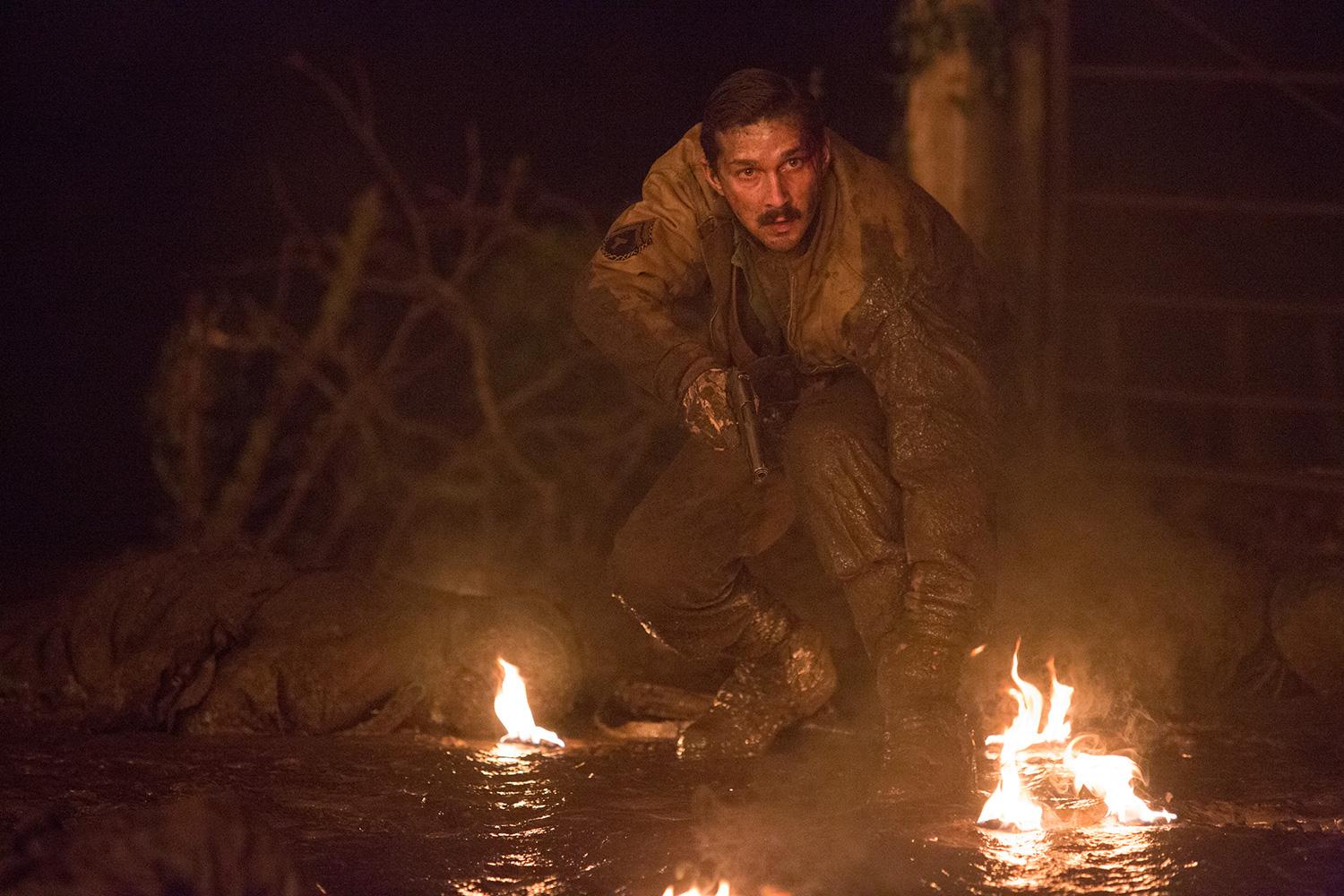Fury revels in the blood-soaked depravity of warfare. At a time when most war movies angle toward some message or another, writer and director David Ayer’s World War II tank movie is beautifully uncomplicated: Go here, blow up all the Nazis, rinse (off the lingering blood and gore), and repeat.
It’s the sort of story that brings to mind classics like The Dirty Dozen and the much more recent Inglourious Basterds. They’re stories that forgo hammering you over the head with a Message in favor of a more immediate adrenaline rush. Fury‘s rush comes from the spectacle of its immaculately executed set pieces and lovingly authentic backdrops. It’s crude and violent, like a warrior-hero’s journey should be.
The colorful personalities that form the emotional heart of the story are led by none other than former Basterd Brad Pitt, as Staff Sergeant Don “Wardaddy” Collier. There’s no nuance here. Wardaddy is definitively tough-as-nails in everything he does. He’s the hero that heroes aspire to, a quiet, commanding leader of men who comes off like a character pulled out of a war-torn fairy tale.
Fury is popcorn action with a brain.
Technician 5th Grade Boyd “Bible” Swan (Shia LaBeouf) is, as the wartime nickname gives away, a man of God. He’s quiet and composed, rarely preachy, and immediately comes off as a solid, dependable right-hand to Wardaddy. That leaves Private Norman Ellison (Logan Lerman), a fresh-faced transfer from the typing pool who, when he first joins this bunch, is as short on warrior’s spirit as he is on a nickname.

Under Ayer’s capable direction, Ellison fuels the emotional journey that guides the story, with his newcomer status in this well-oiled machine – the team and the tank – constantly questioned by the more seasoned veterans. Wardaddy quickly takes the child-soldier under his combat-scarred wing, forcing him to confront the inhumanity of warfare head-on. There’s a powerful moment early in Fury where the older soldier physically compels his new recruit to kill a captured Nazi. It’s an intense moment, one that easily rivals Fury‘s explosive combat sequences.
Ellison’s journey is the only one that really matters. Wardaddy, Coon-Ass, Gordo, and Bible have already been milled in the factory of war by the time he arrives. Cast out of the safety of clerical duties – like so many were in the reality of World War II – Ellison faces a deadly sink-or-swim scenario. He can keep a tight grip to his God-fearing, violence-averse sensibilities, riding them straight into the afterlife, or he can model his behaviors after these crude, homicidal men. These heroes.
Let’s be honest, though: You’re here for the tanks, and the explosions they foretell.
Let’s be honest, though: You’re here for the tanks, and the explosions they foretell. Ayer’s set pieces do not disappoint, serving as a kinetic force within the film. The claustrophobic setting of the Sherman tank’s interior, crowded with men and oil and evidence of past battles, is presented in beautiful juxtaposition with larger shots of the carnage in motion. Fury owes much to the opening sequence of Saving Private Ryan here, with its hyperreal shots of disintegrating heads and explosively severed limbs evoking revulsion and seat-edging excitement in equal measures.
The strangely disjointed plot perfectly suits the pace, which is often a flip-flop between character scenes and open warfare. Fury has an almost episodic feel in the way it is structured. There’s no singular goal driving this motley crew beyond that most basic wartime edict: Destroy the enemy at every turn. The result is a collection of vignettes that, over time, paint a portrait of this colorful tank crew and their exploits. Cinematographer Roman Vasyanov’s expert touch is evident here; Ayer fills the background of every scene with busy life, just soldiers doing soldier things, and Vasyanov – reunited here with his End of Watch director – clearly revels in lingering on the tableaus.
Cinematographer Roman Vasyanov’s expert touch is evident.
Fury is popcorn action with a brain. It’s a beautiful, sprawling war film that opts against proselytizing in favor of spectacular action. More smart than dumb, more iterative than evolutionary, Ayer’s hero journey rides in on the back of the many films that precede it. But it does so with a sense of style and grace that is all-too-rare in the blockbuster space. Much like the warriors and their sputtering, patchwork tank at its heart, Fury is a scrappy reminder that the fiction of war can be both fun and fulfilling.
(Media © 2014 Sony Pictures Digital Productions Inc.)






